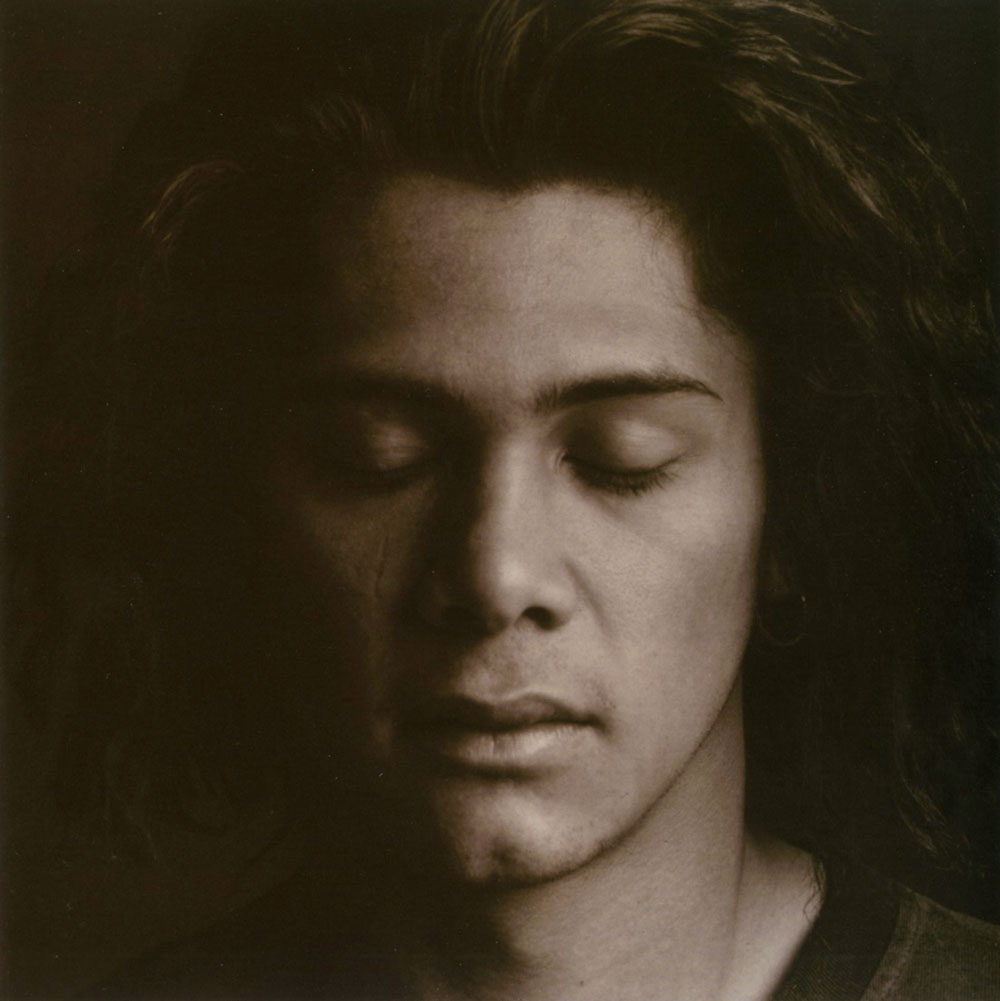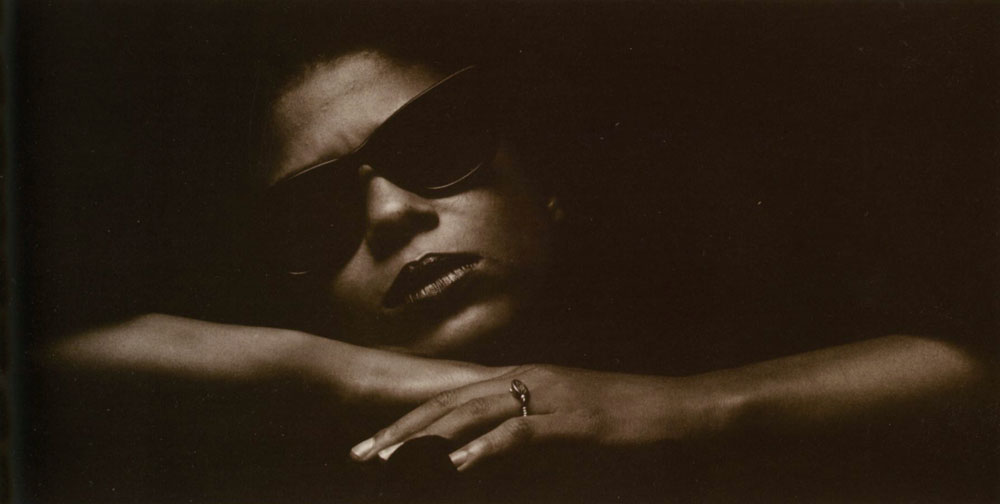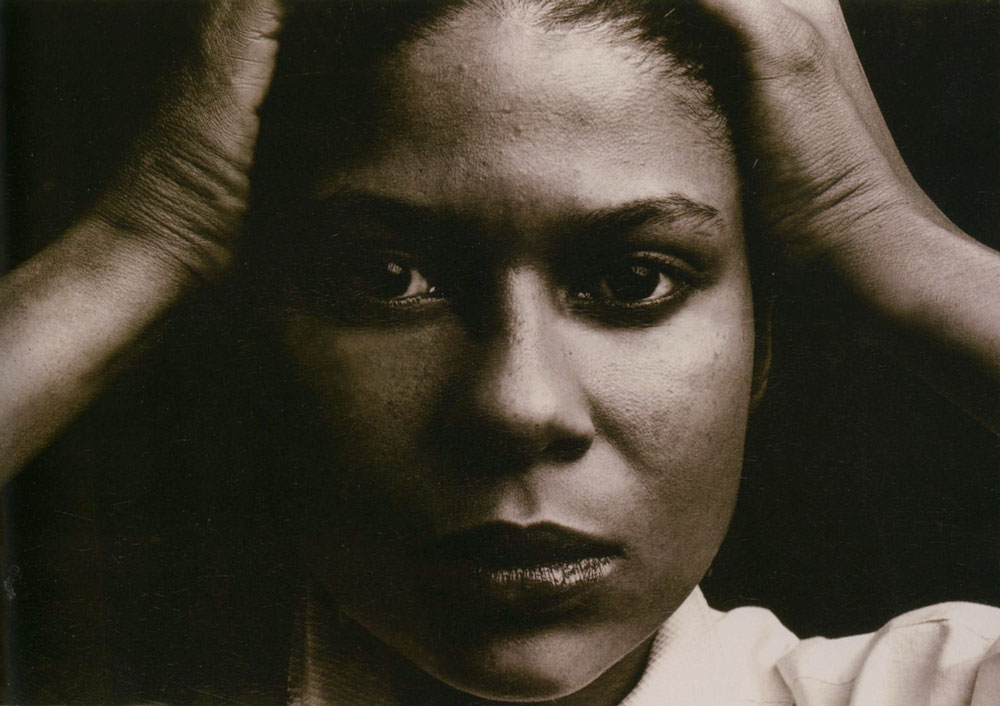Michael Riley ~ Kristina 1986
Originally published in the NGA's Artonview, winter 2006
 |
| Michael Riley Darrell 1989 gelatin silver photograph National Gallery of Australia, Canberra |
In September 1986 Michael Riley's moody Hollywood-style glamour portrait of Kristina (Nehm), a Sydney-based Black Australian woman, was used on the invitation card for the opening of the NADOC '86 Exhibition of Aboriginal and Islander Photographers at the Aboriginal Artists Gallery in Clarence Street, Sydney. The exhibition was part of NADOC '86, the annual National Aboriginal Day of Commemoration programs -now known as NAIDOC Week (National Aboriginal and Islander Day Observance Committee).
The 1986 NADOC photographic exhibition included some 60 works by Riley and nine other Indigenous photographers: Mervyn Bishop, Brenda L Croft, Tony Davis, Ellen Jose, Darren Kemp, Tracey Moffatt, Chris Robinson, Terry Shewring and Ros Sultan. The style and form varied from artist to artist across portraiture, landscape, protest marches and press photographs, including images by Bishop, the eldest of the group and then the only long-established professional who had made a famous 1975 Aboriginal land rights recognition image with then Prime Minister Gough Whitlam pouring soil in to the hands of Gurindji traditional owner Vincent Lingiari, at Daguragu in the Northern Territory.
The prints were mostly black and white and the content addressed a wide range of issues and notions of Aboriginality. Riley and Tracey Moffatt presented staged portraits that turned upside down the stereotypes that inhibit the lives and futures of Indigenous people. For them identity involved issues of dress and undress and reduction would be dependent on inserting the unfamiliar dark face and body in the familiar white scenario.
Both Moffatt and Riley worked outside what they saw as constraints of 'straight' photography preferring to stage their images and evoke earlier types of stereotyped photographic images of Aboriginal people. Both would also later work in film.
Photographs taken at the opening by Sydney photographer William Yang show there were indeed plenty of beautiful and chic Black women and men present. It was in fact an historic event; the first exhibition ever held of contemporary art exclusively by Aboriginal and Torres Strait Islander photographers. It was an art opening like any other but that note of style and confidence in that inviting image set the tone of the show and the future role of Indigenous photographers in Australian and international art. Riley, Moffatt, Bishop, Croft and Jose in particular developed high profile national and international careers over the next decade.
 |
| Kristina 1986, gelatin silver photograph printed 2001, National Gallery of Australia, Canberra Purchased 2005 Image exhibited at the NADOC '86 Exhibition of Aboriginal and Islander Photographers, Aboriginal Artists Gallery, Sydney 1986 |
The NADOC '86 show was preceded by Koori Art '84, the pioneering show of Indigenous urban-based artists which had included several photographers including Riley and Shewring.
Of the photographers in the 1986 Aboriginal Artists Gallery show the photographer and nascent film-maker Tracey Moffatt, attracted the most media attention. She showed a complex but coolly classic black and white portraits of dancers from the Islander Dance company called the Some Lads series and a now iconic colour portrait of dancer/actor David Gulpilil sprawled on a car bonnet at Bondi Beach with tinnie in hand, ghetto blaster at his side and traditional white painted body markings.
Regarding this image the artist made a rare categorical statement to the media: 'Why shouldn't Aboriginal people go to the beach like anyone else'. The point was lost on some. Moffatt was to receive quite a bit of flak for allegedly representing an Aboriginal person as a drinker of alcohol in a public setting.
One of Riley's first major works was prominent in the NADOC '86 exhibition. This was the dark-toned head and shoulders portrait of young woman wearing a luminous white shell or bone necklace which was marked by an elegiac beauty and other-worldliness which would become the artist's signature. It recalled, and at the same time overwrote, the well-known 19th-century photographs of Tasmanian Aboriginal woman Truganinni wearing the maireener shell necklace unique to the Islander's craft.
After Truganinni's death her shell necklace and bracelet were acquired by the Royal Exeter Museum in England and repatriated to Hobart in 1997, along with another maireener shell necklace held in the South Australian Museum. Riley would have been aware of the issues of violation of Trugannini's body and repatriation of her remains from museums. The image also recalled a 19th-century image by German-born photographer JW Lindt of a beautiful Grafton Aboriginal woman wearing a white bone necklace which was widely reproduced. Lindt made his name and fortune in the 1870s with sales of staged tableaux photographs taken in his Grafton studio of local Aboriginal people in 'authentic' ethnographic settings.
Riley's images of Kristina (with and without sunglasses) in the 1986 exhibition were selected from a number taken throughout the mid to late 1980s. The exhibition notice image shows Kristina in a languid pose leaning on her crossed arms. It seems 'retro', recalling 1930s images of Black American Blues singers hanging over the piano player.
The sunglasses she wears accentuate the hung-over, l-cant-stand-the-light look of that genre. Anthony (Ace) Bourke, then Director of the Aboriginal Artists Gallery, and co-curator of the show with Moffatt, recalls the picture 'was very political, black girls weren't meant to be seriously chic'. Looking again at the image, we can't see her eyes and despite her small frown imparting a note of anxiety,
Kristina oozes confidence and spirit, no victim here, she flaunts her sunglasses as a fashionable, not functional artefact. Yet no Australian fashion magazine then would have hired a Black model despite the profile of Black singers and models overseas.
The NADOC '86 show marked the beginning of a public profile within the art world for contemporary Indigenous photographers.
The National Gallery acquired a 2001 print of Kristina 1986 and another portrait from slightly later, Darrell 1989 in 2005, the latter is very enigmatic with the young man's soft-lit face, eyes lowered and closed, in a Zen-like meditation. At this time Riley had become a professional artist, he had taken classes at the Tin Sheds in photography and was working as Assistant to teacher Bruce Hart at Sydney College of the Arts. In the 1993 Riley would make his Sacrifice series of overtly symbolic tableaux ramping up the spiritual and multilayered readings of his work.
An earlier generation of Australian non-Indigenous photographers in the seventies had imagined themselves taking up a 'new' medium. For this first generation of highly directed Indigenous artist-photographers to begin meant inevitably that first there would be some backtracking. The medium had a history as an accomplice to injustice which needed rewriting. Other Indigenous photographers shows followed in the next five years aided by the establishment of other dedicated venues such as Boomalli Aboriginal Artists Co-operative in 1987. New Indigenous photo-based artists and curators appeared. Issues of dress and undress, which are central to how the native is seen (and not seen), remained topical for many.
 |
| Kristina (no glasses) 1984 gelatin silver photograph National Gallery of Australia, Canberra Purchased 2005 Vintage print exhibited Koori Art '84, Artspace, Sydney |
Gael Newton AMwas Senior Curator of Photography at the National Gallery of Australia, Canberra, and author of a number of reference works, exhibition catalogues and monographs on the history of photography.
In the early 1990s, using the KODAK Australasia Pty Ltd Fund for emerging photographers, she began a special focus collection of contemporary Indigenous photographers for the National Gallery of Australia permanent collection, recognising the significance of the emergence of Indigenous urban photographers in the mid-to-late 1980s.
more Gael Newton Essays and Articles
More about Michael Riley
|